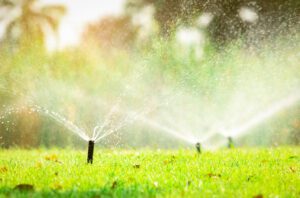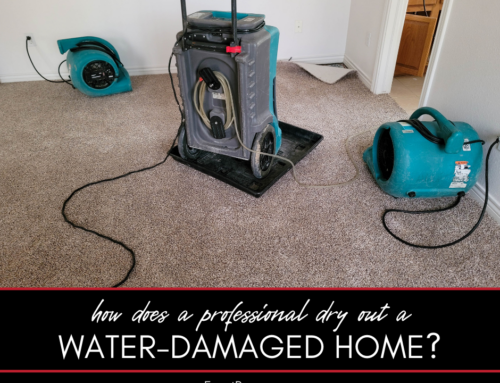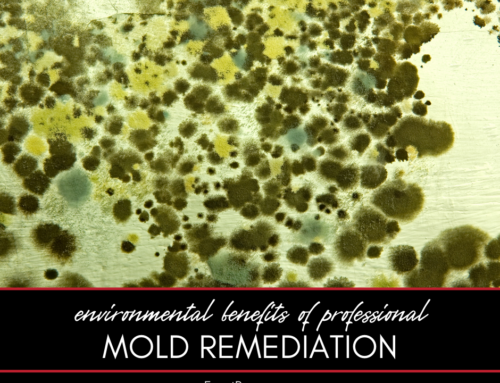
You had another heavy rain last night. Precipitation is generally good for your landscape but the constant puddles and soggy areas that linger after heavy downpours—not so much. It would be nice if you didn’t have to worry that the mood of your cookouts and outdoor gatherings might be dampened by a water-logged lawn.
Standing water in your landscape is due to poor drainage, and not only can it destroy your lawn but it can be a welcome invitation for bugs and even threaten the integrity of the foundation of your home. Consider these ways to improve drainage in your yard and around your home.
A French Drain
A French drain system uses a perforated pipe to collect and distribute water over a large area. The pipe is laid in a gravel trench and as water collects and travels inside it is dispersed through the pipe’s perforations.
An added benefit of a French drain is that you can have a water inlet on both sides of the pipe, which makes it possible for two areas to flow into the same drain.
A Dry Well
Instead of a perforated pipe a dry well is a tank that’s perforated on its sides and is surrounded by aggregate. Water is piped in from other areas and collects inside the well, which gradually leaches it into the ground through the perforations in the tank. A dry well can take in a large amount of water and disperse it in a way that keeps the soil from becoming overly saturated.
An efficient dry well system should be able to hold the first 20 minutes of your area’s largest average rainstorm. Drainage devices like French drains, gutters, and channel drains can all be connected to a dry well.
Gutter Downspouts
Although the gutters of your roof may do an effective job of collecting rainwater, if the downspouts empty out into an area that runs uphill or has a tendency to hold water, you may need to redirect them.
One way to do this is to attach a drain pipe to the end of your downspout. This will increase your ability to direct water away from problematic areas in your yard. Another option is to dig a dry creek bed—that travels away from your yard’s trouble spots—into which your downspout can empty. You’ll have to roll up your sleeves and put in a little elbow grease, but it’s totally doable.
Rain Gardens
If you have a considerable drainage issue another possible solution can be to plant a rain garden. Rain gardens can soak up large amounts of water and help alleviate issues like standing water and soggy patches in your yard. There are many native plants that flourish in soggy areas. Oftentimes these plants create habitats for frogs, birds, insects, and various species of wildlife. They can be easy to care for and enhance the look of your landscape.
For a rain garden that blooms with pops of color consider iris (hardiness zones 3-9), daylily (hardiness zones 3-10), purple coneflower (hardiness zones 3-9), and American beautyberry (hardiness zones 5-9). For a little height, fullness, and color consider deciduous holly (hardiness zones 5-8). For towering height and considerable width switchgrass can be the way to go (hardiness zones 5-9).
Do You Need a Disaster Remediation Expert in Washtenaw County or Jackson County?
If your home has already been damaged, we can help. Check out our services and call Exact Recon for your free disaster remediation quote today. We offer:










